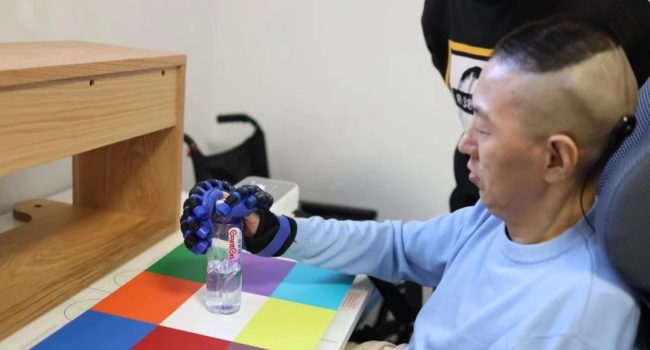
Paralyzed man in China learns to eat and drink on his own thanks to neuroimplant
Chinese researchers from Tsinghua University have successfully restored some motor functions to a paralyzed patient using a neuroimplant called Neural Electronic Opportunity (NEO). Unlike Elon Musk's Neuralink announcement of the first person receiving a brain implant, Chinese scientists provided more detailed information about their achievement.
The Chinese patient had been experiencing paralysis in all limbs for 14 years due to a spinal cord injury from a car accident. The implant was installed last year, and after several months of training, the patient was able to lift a water bottle. Currently, he can independently eat and drink, and further rehabilitation and improvements to NEO algorithms will enable him to regain the ability for various movements.
The Chinese implant is considered less invasive and safer compared to Neuralink's solution, according to its creators. The compact chip, about the size of two coins, is not directly implanted into the brain's nerve tissue but is placed in the epidural space between the brain and the skull.
The implant has no battery and is wirelessly charged using a high-frequency antenna. The implant captures nerve signals and transmits them wirelessly to an external receiver attached to the head's skin. The signals are then processed and transmitted to a wearable glove-like device, allowing the person to grasp various objects.
This case marks the first in China where an implant was embedded in a human brain; previous trials were conducted only on animals. The NEO system was developed over ten years, and scientists obtained approval for human experiments from authorities last year. Extensive research is still needed before the implant can be widely implemented.
- Most read
month
week
day
- Xiaomi unveils exclusive Redmi Note 13 Pro+ dedicated to Messi and Argentina national team 972
- Internet 500 times faster than 5G tested in Japan: It allows to transfer five movies in HD resolution in one second 822
- What will happen to the Earth if the Moon disappears? 740
- Which smartphones will be the first to receive Android 15? 739
- iPhone 16 may get colored matte glass back panel, 7 colors 717
- Great value for money: 3 best Realme smartphones 705
- WhatsApp receives two new features 670
- Why it is recommended to download applications on trusted platforms: In 2023, Google rejected publication of more than 2 million dangerous applications on Google Play 613
- Instagram is changing its approach to content recommendations: How will the application help promote original content and fight reposters? 584
- How to realize that your smartphone is hacked and you are being surveilled? 557
- Archive
